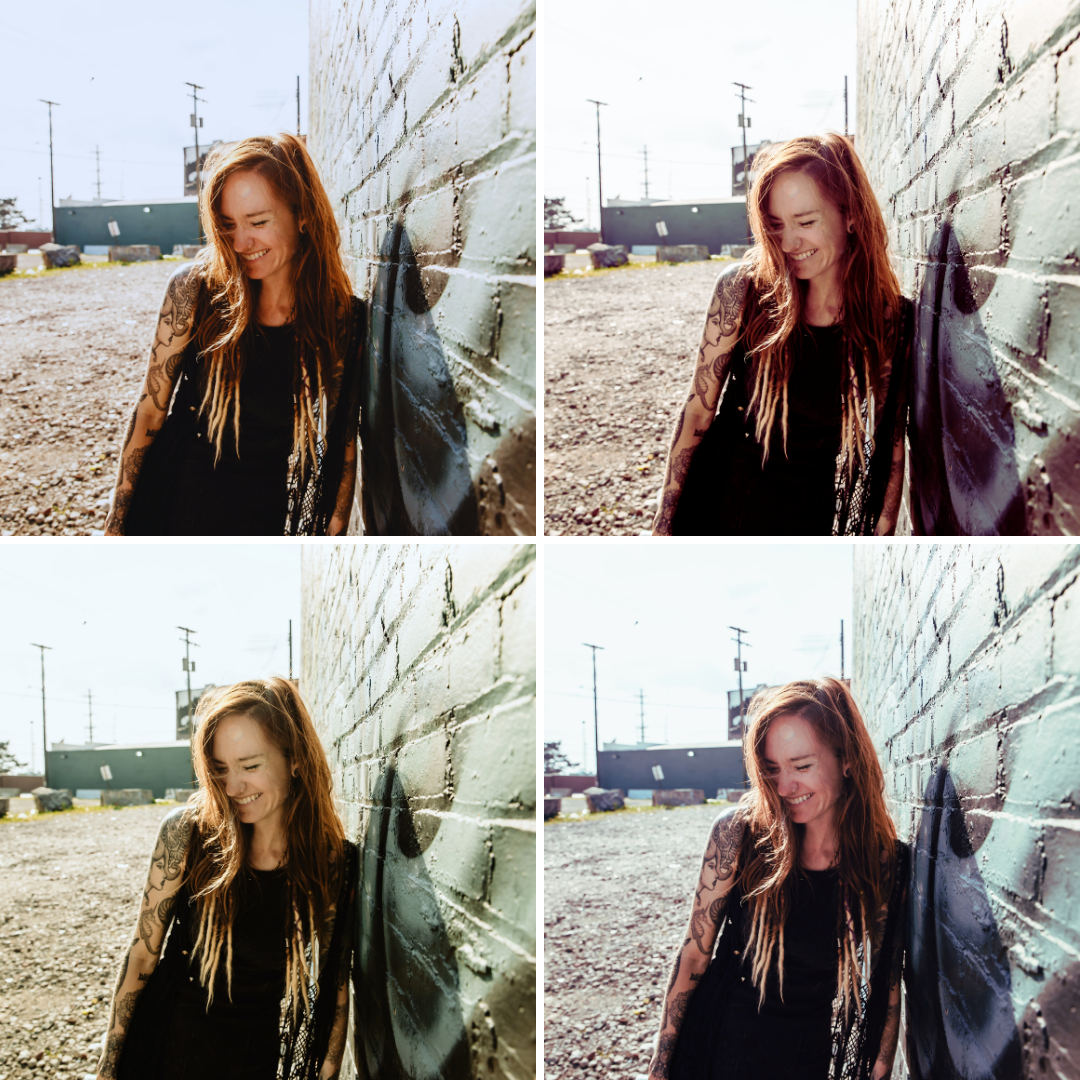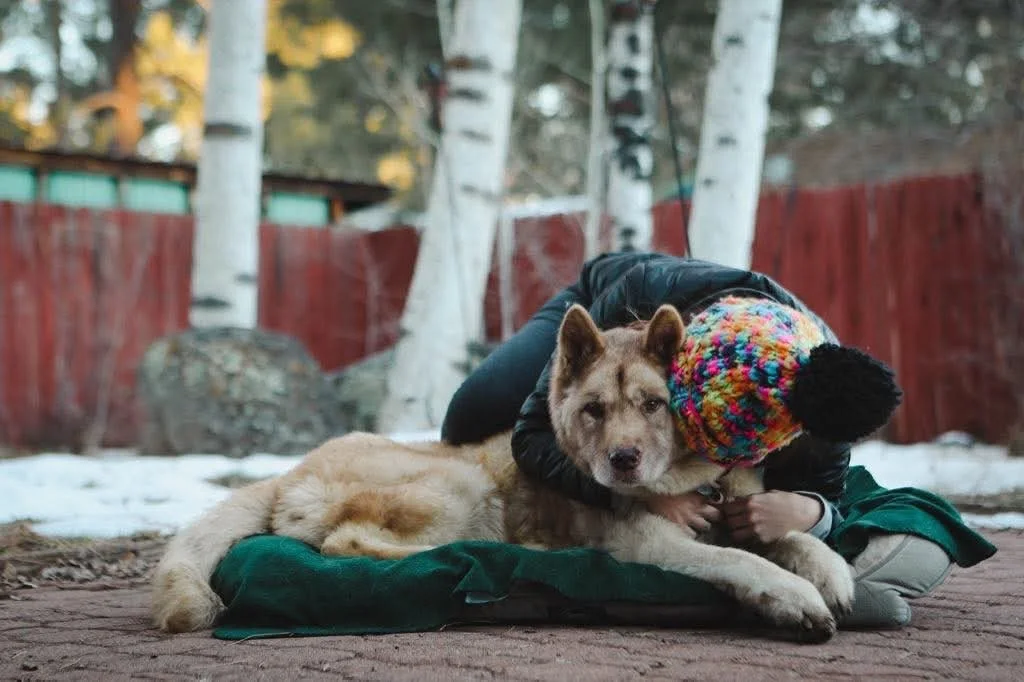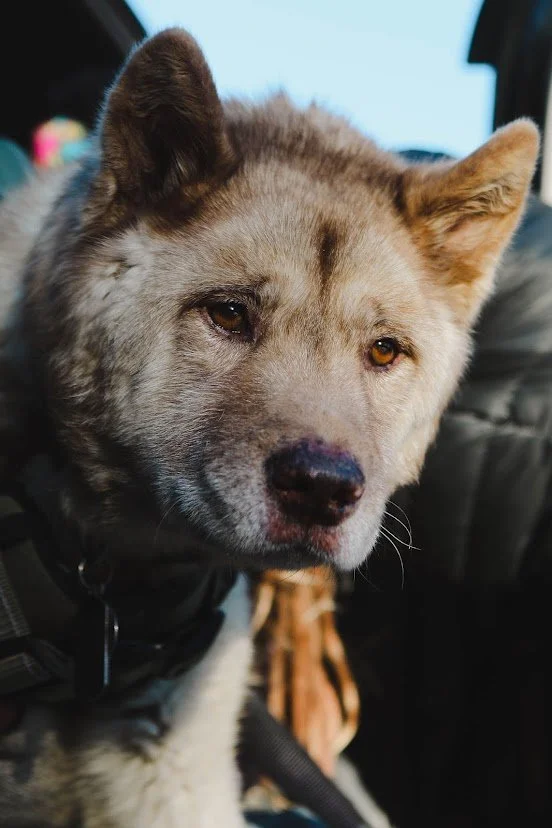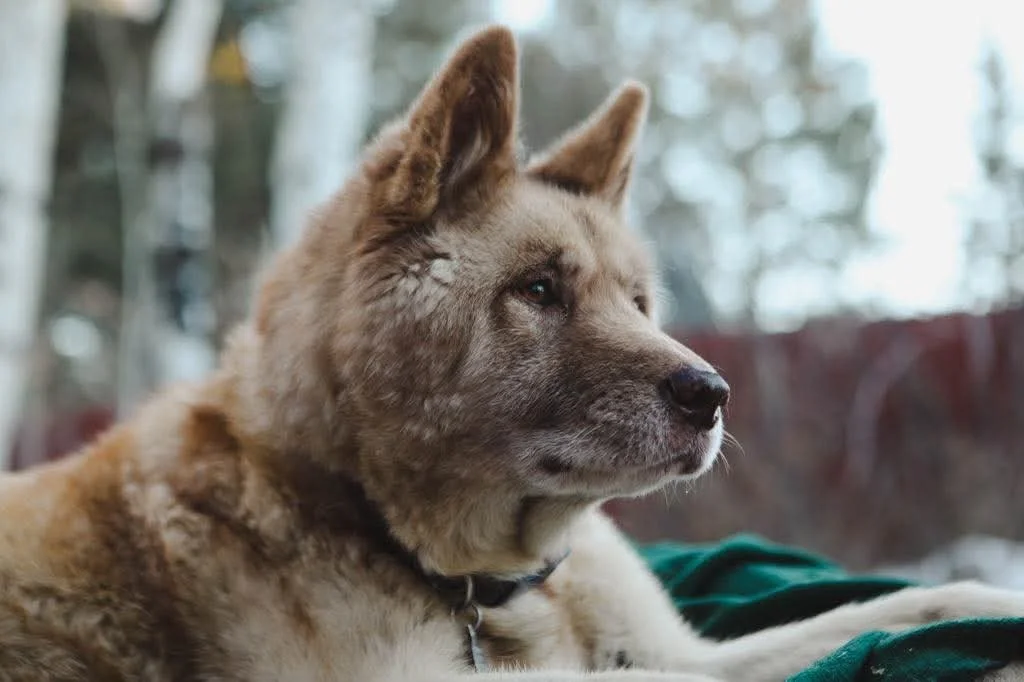fuck & the throat chakra
Screaming to release stuck emotions is a well-known method of Somatic Therapy - just like crying or shaking. These exercises can help to provide relief by setting the emotion free and relaxing the nervous system.
Never underestimate the power of screaming “FUCK” on the top of your lungs.
Seriously.
I know that might sound weird, but let’s unpack this together:
The word “Fuck” is the word we’re told we’re not supposed to say. And maybe because of this it might be the word we want to say: and therefore holds SOOOOO much energy. What we resist persists, remember?
We know that sometimes emotions get trapped inside our body if we don’t allow them their life’s mission - which is full expression. We know that stuck / long term emotions can cause physical issues (you’ve heard of stress & its relationship with disease, yes?)
Similar Childhood experiences
So let’s reflect on these potential experiences you may have had in childhood - especially if you’re female.
You may have been told:
1. You’re not allowed to be angry
2. You’re not allowed to be loud: kids are meant to be seen and not heard
3. How dare you say that!
Perhaps you were shamed with
4. People won’t respect you if you talk like a sailor.
5. Good kids don’t say bad words!
Perhaps guilted with
6. If you say that it reflects poorly on me!
This is a list of common things we’re told as children, amongst others. This list is destructive to our self esteem, autonomy and boundaries because it limits what you’re able to say and how you express. Who is anyone to tell you not to say things?
I’ve always thought that not saying a word gives it more power. This is also true when it comes to names. I have found when I do sound healing sessions, I sometimes will ask my client to purge the name of a person who hurt them; this is in order to release it out of their body. Often there is an emotional response to it and 10/10 times the person feels better! Consider the lesson of He-Who-Must-Not-Be-Named from the Harry Potter series:
“Fear of a name increases fear of the thing itself.” ~ Dumbledore
We allow certain words to hold energy and then we deny ourselves energy.
Why? Let’s use that untapped potential!?
I find that specifically yelling this word - FUCK - helps to release and unlock a lot of power from people who would consider themselves people-pleasers, perhaps children of narcissistic parents or tendencies, and therefore maybe lacking boundaries.
There is latent power in yelling FUCK.
Now, if you’re like “But Jess, the word FUCK comes from horrible roots!” Like yea, you might be right... But that just proves my point even more!
“If you name me, you negate me.” ~ Søren Kierkegaard.
What if instead of judging this word as bad, we unlock the potent potential of setting this word free. Let’s harness this ferocious energy of “FUCK” by yelling it on the tops of our lungs and using it to clear the Throat Chakra and heal ourselves!
*Note: I’m not saying its okay to swear AT people - anger splashed on others is, in fact, inappropriate.
Turning back time
Personally, I believe in past lives.
Back in the day it was easiest to kill people via the neck (aka Throat Chakra). People were hung, throats were slit, heads rolled from the guillotine. People who were scouts, truth tellers, and history writers were murdered to keep truth hidden. Is it any surprise that the reincarnations of those people - us - struggle with the truth: how can we speak our truth if it’s dangerous? if we’ll get killed because of it? if our subconscious mind or perhaps our soul is scarred with these memories as truth = pain?
How can we tell our truth when it’s literally been disconnected from us?
Why does this matter?
Healing the throat chakra
The Throat Chakra is seen as the bridge to higher chakras; below the Throat Chakra, the others deal with physical-realm things; safety, abundance, motivation, and love; but the Chakras above the throat deal with intuition, self awareness and realization, and divine consciousness & connectedness.
Finding your truth, understanding it and speaking it help heal the Throat Chakra. How do we do this?
Figure out what your truth is:
Spend time alone, away from people and social media
Others don’t know your truth, only you do
Silence helps you hear better
Understand your truth and what it means
Connecting deeply within yourself
Understanding your emotions & patterns
Aligning with your authenticity
Speaking your truth
From a space of integrity
With balanced emotions, and a centered & grounded Self
In Biofield Tuning, we find the right side of the Throat Chakra relates to issues speaking your truth and not being heard. This can be because someone wasn’t listening, or flat out didn’t believe you. The left side of the Throat Chakra deals with not speaking your truth; this can happen if we don’t know what our truth is, if speaking our truth isn’t safe, or even! If we’re not listening to ourselves. How can others hear us if we don’t hear ourselves?
When I work with clients on the Throat Chakra a piece of homework I give them is to go on a drive and scream FUCK as loud as they can. For themselves, for their inner child, for their pain, their life’s journey, for past lives, and people they’ve been before.
Try it & see what happens*
Here’s to the women who don’t give a fuck ~ Janne Robinson
Somatic therapy
This blog is inspired by the wisdom of Somatic Therapy. Somatic Therapy is not something I have been trained in, but its something I’ve always understood intuitively - and you probably do too.
We see children self soothe by moving or rocking their body back and forth when they are upset. We release emotional pain by crying or running or dancing. Somatic Therapy is a way to release emotions with techniques that range from body exercises - like shaking or writing or mental exercises like body scans, relaxing the body as you scan different areas with your mind.
I have found that specifically yelling FUCK seems to help unlock latent power in people who would historically call themselves people-pleasers. Something about saying the word ‘you’re not supposed to say’ sets them free.*
~
Please watch Osho’s similar opinion on The Magic of the Word Fuck
~
*Disclaimer -
Don’t splash your anger on others, there should be no ~ receiver ~ to your anger.
You don’t have to agree, as always try things with the same philosophy of trying on a T-shirt. If it doesn’t fit, try on a new one ;)
the four selves
Or as I call them - the Four Jess’s.
I came up with this concept deep in meditation and reflection with the BioCybernaut Institute in Sedona. Here, they measure your brain waves and teach you how to get into alpha state in order to do deep internal work on your subconscious; you can access deep subconscious healing with forgiveness and compassion through finding truths, previously hidden.
Until you make the unconscious conscious, it will direct your life and you will call it fate.
- Dr. Carl Jung
Something that we all know - forgiveness can be really hard. In my time of reflection and solitude in a dark room in Sedona - it occurred to me why forgiveness can be so difficult.
The answer I found is: because we are made up of different versions of ourself - so there are different people inside you that have to be in agreement in order to give permission to fully forgive.
Now, I’ve already written some blogs on forgiveness - you can find one here. However, this is a brand new concept, an evolved method of forgiveness, if you will.
Say you were hurt when you were really small, which may have made you sad, or feel powerless or hopeless.
Perhaps you were angry and vengeful as a teenager.
Now, because some time has passed, you can look back on it logically without getting too triggered (although you still might get a little triggered.) Compassionate thoughts like “they were doing their best with the information they had,” may float around in your awareness.
Perhaps in 40 years you can look back on it and be completely at peace with it.
These are the Four Selves - these selves not only have to feel the feelings, but have to allow external expression of them in order to approve Full Forgiveness. Let me explain:
The little self
The little self is most likely the one that got hurt. How you got hurt will vary from person to person. Maybe you weren’t physically cared for, maybe you weren’t emotionally cared for, maybe you weren’t mentally cared for, and maybe your life circumstances didn’t provide safety or stability to feel cared for.
This makes the Little Self sad; feelings of despair arise, feelings of ‘I’m not worthy,’ ‘I’m not loveable,’ will come up here. Feelings of ‘I’m unsafe,’ ‘I don’t belong,’ can arise here. Feelings of shame can arise here because ‘If I was good enough this wouldn’t have happened to me.’
Sound familiar?
There can be no forgiveness without acknowledging and fully feeling the emotions.
Why?
Because your heart and your head have two different consciousnesses. Logically reasoning something in your head doesn’t access your emotions or allow you to feel in your heart, and forgiveness is a feeling, not a thought.
Let’s allow the little self to be sad, to cry, to yell, to sob, to despair, to deeply feel the feelings of sadness, AND to allow those feelings to become unstuck in our body and be expressed.
So, we emote and express the emotion; after all emotions are energy in motion, and we feel things to heal them. This is the opposite of shoving things down, compartmentalizing, and ‘I’ll deal with that later,’ mindsets. We are pulling these emotions out of being stuck in our body to be processed, live their entire life span (beginning, climax, resolution) and therefore actualized and finally released.
the teenage self
Because the Little Self cannot protect itself, our Teenage Self avenges the Little Self. It has to, because now, it can! The Teenage Self is smarter, bigger and physically stronger than the Little Self. The Teenage Self has access to more resources, coping skills, concepts, wisdom, friends, therapists, counselors.
So, outwardly - we might rebel, we might steal, smoke, drink, yell; or inwardly - we get depressed and implode on ourselves, self harm, become introverted, stay away from people, isolate, maybe we take things personally, or out on other people.
This of course will look different to different people. The way we react will always vary based on our environment and personality.
The idea here is the Teenage Self is now protecting the Little Self, and it will do it anyway it can.
So what do we do?
Once again, we allow the emotions. We allow ourselves to fully feel the hatred, resentment, and betrayal. We allow ourselves to feel these emotions as we felt them as a teenager and once again we express them.
To help process this rage we might hit a pillow with a baseball bat, find our nearest Rage Room, listen to angry music to allow the fullest expression of these emotions. We might write letters we never send to those who have harmed them.*
This is cathartic for the Teenage Self.
the current self
Now we are older and wiser, and have the ability to intellectualize concepts: ‘My dad was this way because his dad was this way.’ ‘My parents did the best they could with the resources they had.’ ‘Therapy was taboo when my parents grew up.’ These are enlightening realizations, no doubt, but it still does nothing for our Little Self that was deeply injured and couldn’t protect itself and our Teenage Self that needs someone to answer for the crimes committed against the Little Self.
Time has given us space to heal, but if we don’t allow our Little Self to cry, and our Teenage Self to rage, and both to express this outwardly, the process is incomplete. Mentally understanding an emotional concept does nothing because it’s not on the same wavelength nor does it speak the same language.
Here we must accept the feelings and allow our Little Self and Teenage self to express these emotions without judgment. To allow yourself to hit rock bottom, to fall in a puddle sobbing or howl at the moon.
Now, some of us do not feel like we have certain emotions, or that certain emotions don’t have an affect on them. I’ve met a lot of people who claim they never get angry and yet have uncontrollable sugar addictions. I find whatever emotion you definitely don’t think is a problem - is definitley a problem - and in dialogue with it you can find fertile soil for self inquiry and evolution.
If you have trouble accessing these emotions try my concept on Emotion Hacking:
If you can’t access sadness - try watching a sad movie about a dog, trust me you’ll cry.
If you can’t access anger - try listening to the angry or angsty music you loved in high school.
If you can’t access those old feelings - get a sound healing session with me and we’ll bring them right up to the surface to work on them.
The point of Emotion Hacking is sometimes we have trouble accessing certain emotions, this is normal, so we use an external stimulus (a sad movie or angry music) to pull up resonance in our internal space.
the old self
The Old Self is wise, the Old Self has lived so long and seen everything you have grown through. The Old Self is the version of you who has allowed the Little Self to cry, the Teenage Self to yell, and the Current Self to heal by feeling and responsibly expressing.*
The Old Self is who you needed when you were younger. The Old Self has compassion for all Selves AND all the people involved in the circumstances that resulted in injury. This is because the Old Self is all of your expressions of self and also has a grander perspective having transcended the stormy seas of your youth, your pain and your suffering.
This next part is a Thought Experiment so try this on like you were trying on a T-shirt - if it fits keep it, and if it doesn’t take it off:
Quantum Physics says that the present moment, right now, is the only thing that is technically real. So if we access all Four Selves in the present moment we are Little, Teenage, Current and Old together, united - therefore by feeling all the emotions and allowing the physical expression of those emotions we can find forgiveness because we've received permission from all the Four Selves, because we’ve allowed them to feel, to express, and to be witnessed by all other Selves.
Here we can release the binds and emotions that hold us captive to these past harmful circumstances or people - in this spaciousness of acceptance and surrender, through feeling and healthy expression, and then letting go of expectation.
feel the feelings and then rest in the spaciousness
Once you allow yourself to feel all the feelings you might find there is a sensation of spaciousness, of lightness and freedom. You might have more compassion and true forgiveness because you didn’t try to gloss over your own pain. In accepting our pain and dialoguing with it we deepen our understanding of ourselves, and therefore others.
When we forgive ourselves we can more easily forgive others, when we allow our emotional expression we can sit easier with the emotional expression of others.
~
Try it on and let me know what you think!
~
Out beyond ideas of wrongdoing and rightdoing there is a field. I’ll meet you there.”
—Rumi
*Expressing responsibly is important and an internal journey. You don’t have to do it alone and can have a vulnerability buddy. You are allowed to feel angry; just make sure you are being emotionally responsible by not blaming or yelling at others. You are allowed to hit a pillow with a baseball bat - that does not affect anyone else negatively. This is about YOU and your feelings.
emotions are like puppies
Emotions are like puppies. They all want to be loved and held and cuddled. They are also all worthy of love and cuddles.
In my perspective there is NO SUCH THING as a bad emotion. Anger and sadness deserve as much love and affection as joy and ecstasy. Joy and ecstasy are easy to love because they feel good! Anger and sadness may be harder to love, but they have more to teach us.
Anger Protects
I believe that Anger is a Protector Emotion. Have you ever felt sad or powerless for so long that finally Anger came to protect you? To light a fire under your ass, to initiate and instigate you? To pick you up and out of sadness and depression and throw you into action?
In some schools of thought Anger can live in and around the Solar Plexus Chakra which has to do with our drive, determination, will and ego. It makes sense that Anger can be instigating! It’s literally pushing us forward into our destiny. Ego is not necessarily a bad thing as it’s purpose is to protect the Inner Child. It can be seen as negative if it runs our life without us knowing.
Until you make the unconscious conscious, it will direct your life and you will call it fate. ~ Dr. Carl Jung
There is no such thing as a bad emotion
Sometimes as children we are taught there are ‘bad’ emotions but this is a lie. When a child is angry or reactive this can mean a boundary is crossed. Sometimes children do not feel comfortable hugging family friends because they can feel like strangers (if there is a lot of time between visits). Parents, sometimes embarrassed by this, will override the child’s boundaries. This can teach a child at young age that their bodies are not their own and they have no bodily autonomy. Obviously this is problematic at the time and later in life when children grow to pre-teens and young adults. If their voices and boundaries didn’t matter then, why would they matter now?
Sometimes parents do not like when children say “no,” as it’s seen as an act of defiance; but it can also be a child setting a boundary. When parents deny a child setting healthy boundaries it strips them of many things. Let’s dive deeper down this rabbit hole: a classmate wants something they have, do they say no? An older person wants to touch them inappropriately, can they say no? Someone hurts them, do they tell? How can they with no voice, no boundaries and no bodily autonomy?
all emotions are valid
Sometimes in childhood when we’re joyful the volume of our voice increases and a parent or peer shushes us and tells us we are “too loud.” This is around the time we learn that our joy isn’t welcome which can cause us to emotionally shut down and physically tighten around the diaphragm. This tightening can cause shallow breathing and a low vagal tone. ‘Vagal tone is a measure of cardiovascular function that facilitates adaptive responses to environmental challenge. Low vagal tone is associated with poor emotional and attentional regulation in children and has been conceptualized as a marker of sensitivity to stress.’
All emotions are valid and the whole point of an emotion is expression. Dr. Candace Pert writes in Molecules of Emotion that an emotion’s full lifespan is a matter of seconds. It begins, climaxes (if allowed) and then resolves itself. By fully experiencing our joy / sadness / anger / ecstasy we are allowing the full expression and complete lifecycle of that emotion.
the only bad emotion is a stuck one
There are many schools of thought on this: Traditional Chinese Medicine (TCM) believes that certain emotions will cause certain meridians and chakras to become discoherent and/or stagnant; by using herbs and acupuncture you can clear congestion and bring about wellness or ‘balance.’ Grief can sit in the lungs, frustration in the gallbladder, anger in the liver, overthinking in the stomach / spleen, emotional and mental digestion in the stomach / intestines and so on. In my experience, the only ‘bad’ emotion is a stuck one, as stuck emotions can cause physical ailments.
When I went through my healing crisis around 20 years old I was only able to fully heal my physical body by also balancing my mind and emotions. I talk about this often as this is when I came to realize that ‘healing’ comes from integrating the mind, body and soul as they are all interrelated; this is also when I dove much deeper into holistic healing, TCM and Ayurvedic medicine.
Later in life during my Saturn Return (Dark Night of the Soul) I was able to use and benefit from what I had already learned to help heal my 27 year old body from shingles. Shingles generally lasts for 3 months and is super painful as it affects the nerves, mine manifested in my face and neck. Luckily, I only suffered with shingles for a week because I came at it from an emotional and mental perspective, as well as treating it physically.
If you ever need another guide on relating emotions to physical illnesses, Dr. Louise Hay has compiled a list you can find here.
emotions are like puppies
And finally, emotions are like puppies. YOUR puppies. Joy and ecstasy are your adorable clean fluffy puppies and anger and sadness are your adorable fluffy puppies that accidentally got covered in mud. The important truth is that they are the same and they are yours. Your fluffy clean puppies come to you for love and you pick them up and hug them easily without hesitation because they’re clean.
Your silly adorable puppies that fell in mud cannot get the mud off themselves, so they are coming to you for help. They need your love, acceptance, and require more time and patience then your other puppies to remove the mud. Once you remove the mud you see the truth - that they are just as deserving and worthy of your love.
This is the same for your emotions, they are all valid and they deserve acceptance. In accepting your emotions and loving them for who they are and what they’re teaching you reduce resistance, you quicken the healing process, and integrate the lesson quicker.
Healing is not fixing the parts of you that are ‘broken’ - healing is loving all parts of yourself anyways <3
I dedicate this blog to my adorable fluffy Toby (pictured) when he got sprayed by a skunk twice - in the same week - during the winter - at night - after I had showered and was cozy in bed about to fall asleep :p
Furever Toby <3














